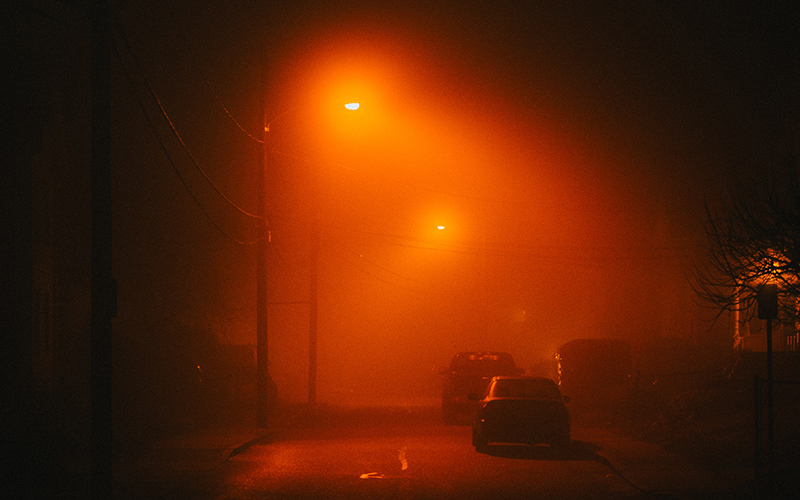MERLIN: Mesopically Enhanced Road Lighting, Improving Night-Vision
The main objective of this research is to examine how the lighting of roads in residential areas might be changed so as to preserve the benefits of good vision while minimising energy consumption.

30 November 2016
The aim is to understand the way vision and visual performance are affected by changes in the spectral composition and level of lighting when performing the visual tasks typical of residential roads at night. Recent advances in lighting technology and our understanding of mesopic vision could make it possible to improve specification of the spectral power distribution (SPD) and spatial distribution of lighting to achieve reductions in illuminance, and hence a reduction in energy consumption, whilst maintaining the same level of benefits.
Lighting is needed to provide a road which is safe for people to use and which is also perceived to be safe. There are no previous studies that have analysed the visual tasks of pedestrians; previous reviews suggest tasks associated with safe movement are performance based, such as the detection of pavement obstacles, which may otherwise be a trip hazard, and the detection and recognition of other people at a distance sufficient to take avoiding action if necessary; tasks associated with fear of crime are perception based, including evaluations of brightness.
The evaluation of pedestrians’ important visual task will lead to identify how the critical details of these tasks (size, contrast) are affected by light source SPD. The recent development of LED light sources suitable for use in exterior environments should eventually offer better efficacy than conventional light sources and furthermore arrays of LEDs give the opportunity for tuning the SPD to better match mesopic vision. There are no previous studies of how this spatial distribution of light impacts on the visual performance and perceptions of pedestrians.
- People
PI: Peter Raynham
R: Navaz Davoodian
- Output
The following publications based on the work undertaken as part of this project have been produced:
- Raynham, P. J., & Davoodian. (2012). What do pedestrians look at at night?. Lighting Research and Technology, 2012; (0), 1-11.
- Davoodian, N., & Raynham, P. (2012). Lighting for pedestrians: Is facial recognition an important task for pedestrian at night?. Presented at: Applied Vision Association Christmas Meeting, London, UK.
- Davoodian, N. & Raynham, P (2013). Do pedestrians look where we lit for them in the streets?. Presented at The 10th Biennial Conference on Environmental Psychology, Magdeburg, Germany.
- Davoodian, N & Raynham, P. (2014) Do we look at other people’s faces more than we need? Lighting Research and Technology, 2014, ACCEPTED.
- Impact
This project will provide a fundamental review on critical visual task of pedestrians in residential streets and measures to be considered to promote safety and perception of safety in the streets and how lighting affects these, and thus what optimum design criteria should be. We believe that better lighting can be provided and energy consumption reduced.
- Links
For further information please contact: Peter Raynham
 Close
Close

